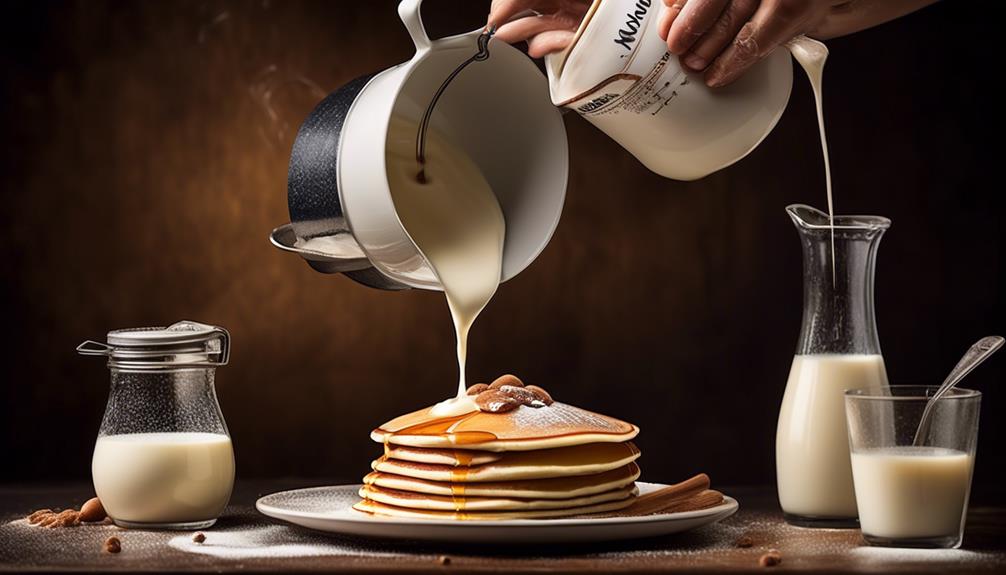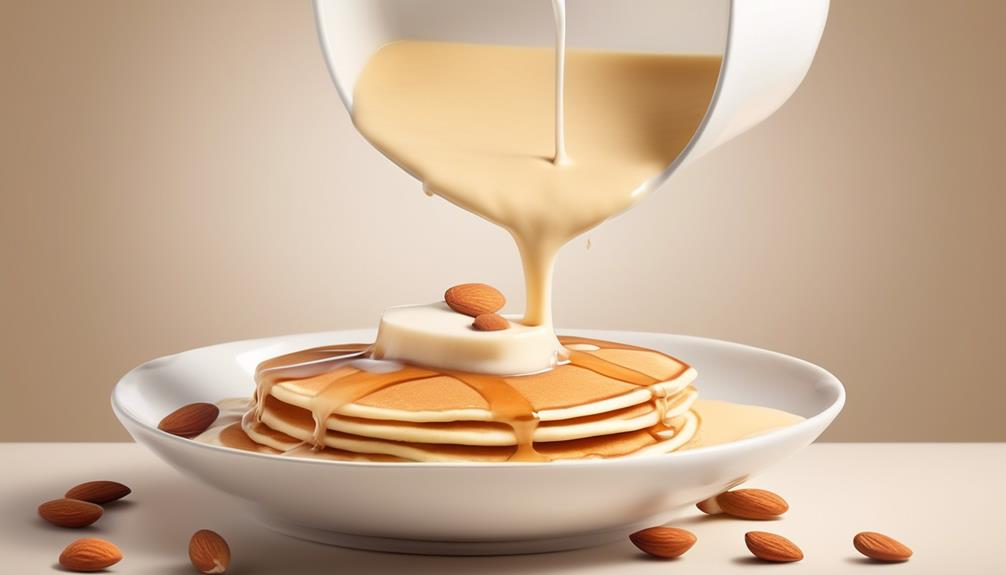Beginners Guides
First Cruise Ship: A Historical Guide
Luxury, innovation, and global exploration converge in the intriguing origins of the first cruise ship – discover how it transformed travel forever.

Setting sail on a voyage through the annals of maritime history, we launch into uncovering the intriguing origins of the very first cruise ship. As we navigate the waters of time, tracing the path from its modest beginnings to the opulent floating palaces of modern-day, a story unfolds that intertwines innovation, luxury, and global exploration.
Join us as we chart a course through the evolution of cruising, where each wave reveals a new chapter in the enthralling tale of how the cruise ship transformed from a mode of transportation to a destination in itself.
Key Takeaways
- Passenger cruises began in 1822, evolving to luxury liners like Prinzessin Victoria Luise in 1900.
- Innovations like virtual reality and sustainable practices shape modern cruise experiences.
- Caribbean cruise tourism is a significant economic driver with over 17 million passengers annually.
- Evolution from basic leisure cruises to high-end luxury ships with extravagant amenities.
Evolution of Cruise Ships
Tracing the evolution of cruise ships reveals a mesmerizing journey through time, showcasing the gradual transformation from humble beginnings to opulent floating palaces. The concept of passenger cruises emerged in 1822 when the Peninsular & Oriental Steam Navigation Company pioneered leisure cruising. These early voyages paved the way for the introduction of passenger cruises to exotic destinations like Athens and Malta in 1844. As the demand for leisure cruising grew, the late 19th century witnessed a significant expansion in the size and luxury of cruise ships. Milestones such as Francesco I in 1833 and Augusta Victoria in 1891 marked important advancements in ship design and amenities.
One of the most notable shifts towards luxury cruising was the introduction of the Prinzessin Victoria Luise, the first ship designed exclusively for leisure cruising. This marked a turning point in the industry, setting the stage for the development of increasingly opulent and extravagant vessels that catered to the growing desire for unparalleled comfort and leisure experiences at sea.
Pioneering Vessels

Pioneering the way for modern leisure cruising, the Peninsular and Oriental Steam Navigation Company (P&O) introduced dedicated cruise vessels in 1881 with the transformation of the liner Ceylon into the first cruise ship. This marked a significant shift towards tailored experiences for passengers seeking relaxation and exploration on the high seas.
- 1835: Arthur Anderson's Cruise Holiday Invention – Anderson's innovative idea in 1835 laid the foundation for the modern cruise industry, setting the stage for a new era of leisure travel.
- 1844: P&O's Leisure Cruise Tickets – P&O's introduction of leisure cruise tickets in 1844 revolutionized the way people viewed vacations, making cruising accessible to a broader audience.
- 1867: Mark Twain's Quaker City Cruise – Twain's cruise experience on the Quaker City in 1867 captured the essence of early leisure cruising, marking a turning point in the industry's popularity.
- 1881: Liner Ceylon's Transformation – The conversion of Ceylon into a dedicated cruise ship in 1881 symbolized a shift towards passenger-centric cruising, focusing on comfort and luxury.
Luxury Liners Emergence
Emerging from the era of pioneering vessels, the evolution of luxury liners marked a significant leap in the history of leisure cruising with the introduction of the purpose-built luxury cruise ship, the Prinzessin Victoria Luise, in 1900. Designed by Blohm & Voss and commissioned by Albert Ballin, the Prinzessin Victoria Luise set a new standard in opulence at sea. The ship catered to a wealthy clientele, offering lavish amenities such as a gymnasium, library, and ballroom. Staterooms onboard were elegantly furnished with brass beds and luxurious details reminiscent of upscale hotels, providing passengers with a royal-like experience. The high-quality service and exquisite accommodations made the Prinzessin Victoria Luise a floating oasis for those seeking luxury and comfort while exploring exotic Ports of call including the West Indies, Mediterranean, Baltic Seas, New York, France, England, and St. Petersburg.
| Features | Description |
|---|---|
| Lavish Amenities | Gymnasium, library, and ballroom for wealthy clientele |
| Elegant Staterooms | Furnished with brass beds and luxurious details akin to upscale hotels |
| Ports of Call | West Indies, Mediterranean, Baltic Seas, New York, France, England, and St. Petersburg |
Industry Innovations

With the evolution of the cruise industry, a plethora of technological advancements and innovative amenities have transformed the passenger experience on modern cruise ships. Here are some notable industry innovations:
- Virtual reality experiences and smart cabin systems enhance passenger interactions and comfort onboard.
- Amenities like robotic bartenders, skydiving simulators, and underwater lounges cater to passengers seeking unique and thrilling experiences.
- Sustainable practices such as using liquefied natural gas (LNG) for propulsion and advanced waste management systems contribute to eco-friendly operations.
- Competition in the cruise industry drives the development of features like onboard zip lines, go-kart tracks, and exclusive celebrity chef restaurants, offering passengers a wide range of entertainment and dining options.
Modern cruise ships focus on providing personalized experiences through advanced technologies like wearable devices for navigation and personalized services, ensuring that each passenger's journey is tailored to their preferences and desires. These innovations continue to push the boundaries of what a cruise vacation can offer in today's competitive market.
Caribbean Influence
The impact of Caribbean cruise tourism on the region's economy is undeniable, with over 45,000 people directly employed and annual revenues exceeding $2 billion. The Caribbean islands have become a significant player in the global cruise industry, attracting millions of cruise passengers each year.
The allure of the region as a cruise destination has resulted in over 17 million cruise passengers visiting the Caribbean islands, providing a substantial boost to tourism and local businesses. This influx of visitors not only benefits the economy but also helps in creating employment opportunities for locals, further solidifying the Caribbean's position as a premier cruise destination.
The contribution of the Caribbean cruise industry goes beyond financial gains, showcasing the region's natural beauty, vibrant culture, and warm hospitality to a global audience. As the popularity of cruising continues to rise, the Caribbean's influence on the industry is poised to grow even more, cementing its status as a top choice for cruise enthusiasts worldwide.
Conclusion
As we reflect on the evolution of cruise ships from their humble beginnings to the luxurious vessels of today, one theory stands out: the Caribbean's influence on the industry. Through the innovative designs of pioneering vessels and the emergence of luxury liners, it's clear that the allure of the Caribbean as a cruise destination has played a significant role in shaping the cruise industry as we understand it.
The historical journey of cruise ships is intricately intertwined with the tropical paradise of the Caribbean.
- About the Author
- Latest Posts
Introducing Ron, the home decor aficionado at ByRetreat, whose passion for creating beautiful and inviting spaces is at the heart of his work. With his deep knowledge of home decor and his innate sense of style, Ron brings a wealth of expertise and a keen eye for detail to the ByRetreat team.
Ron’s love for home decor goes beyond aesthetics; he understands that our surroundings play a significant role in our overall well-being and productivity. With this in mind, Ron is dedicated to transforming remote workspaces into havens of comfort, functionality, and beauty.
Beginners Guides
How Long Does Wall to Wall Carpet Last

We have all heard the saying that a carpet should last about 10 years, but did you know that the average lifespan of wall-to-wall carpet is actually closer to 5-15 years?
It's a wide range, and there are many factors that can impact how long your carpet will last. From the type of fiber used to the amount of foot traffic it endures, there's a lot to consider when it comes to the longevity of your carpet.
But what exactly affects how long your carpet will hold up? Well, let's just say it's not as straightforward as you might think.
Key Takeaways
- The frequency of foot traffic and the type of activities on the carpeted area impact the longevity of wall-to-wall carpet.
- The material of the carpet, such as wool or synthetic fibers like nylon or polyester, plays a significant role in determining its lifespan.
- Environmental factors such as humidity, temperature fluctuations, sunlight exposure, and foot traffic also affect the integrity and durability of the carpet.
- Regular maintenance, including vacuuming, spot cleaning, and professional deep cleaning, can greatly extend the lifespan of wall-to-wall carpet.
Factors Affecting Carpet Longevity
One of the key determiners of carpet longevity is the frequency of foot traffic and the type of activities that occur on the carpeted area. The material of the carpet plays a significant role in its durability. For instance, wool carpets are known for their resilience and can withstand heavy foot traffic. On the other hand, synthetic carpets, such as nylon or polyester, offer excellent resistance to stains and fading, making them suitable for high-traffic areas.
Additionally, the environmental factors in the area where the carpet is installed also impact its lifespan. Humidity and temperature fluctuations can affect the integrity of certain carpet materials, leading to premature wear and tear.
Understanding the specific characteristics of different carpet materials is crucial for determining their suitability for various environments. By considering the foot traffic, activities, and environmental conditions, one can make informed decisions about the type of carpet material that will best serve the longevity requirements of a particular space.
Moreover, staying informed about the latest advancements in carpet technology and industry trends can provide valuable insights into selecting the most durable and resilient carpet for different settings.
Average Lifespan of Wall-to-Wall Carpet

The average lifespan of wall-to-wall carpet can vary significantly based on factors such as material quality, maintenance practices, and environmental conditions. When considering the longevity of wall-to-wall carpet, it's essential to take into account the following:
- Carpet Materials: The type of material used in the carpet significantly influences its lifespan. For instance, wool carpets are known for their durability and can last up to 20 years with proper care, while nylon carpets, which are a cost-effective flooring option, typically have a lifespan of 10-15 years.
- Maintenance Practices: Regular maintenance, including vacuuming, professional cleaning, and addressing spills promptly, can greatly extend the lifespan of wall-to-wall carpet. Neglecting maintenance can lead to premature wear and a shorter carpet lifespan.
- Environmental Conditions: Environmental factors such as exposure to direct sunlight, humidity, and foot traffic levels in the area where the carpet is installed can impact its longevity. For example, carpets in high-traffic areas may wear out more quickly compared to those in low-traffic spaces.
Understanding these factors is crucial for making informed decisions when choosing cost-effective flooring and ensuring the longevity of wall-to-wall carpet.
Signs of Wear and When to Replace
When assessing the condition of wall-to-wall carpet, it's crucial to be vigilant for indications of wear and aging that may signal the need for replacement. One of the most common signs of wear is color fading, especially in areas exposed to direct sunlight. Over time, the vibrant colors of the carpet may start to lose their luster, giving the carpet a dull and worn-out appearance.
Additionally, high traffic areas, such as hallways and living rooms, are prone to showing signs of wear more quickly. Matting, crushing, and visible wear patterns in these areas are clear indicators that the carpet has reached the end of its lifespan.
As a result, it's important to regularly inspect these high traffic areas for any noticeable changes in the carpet's appearance. When these signs become evident, it's a clear indication that the carpet may need to be replaced.
Furthermore, professional carpet cleaners can assess the state of the carpet and provide insights into whether its condition warrants replacement. Ultimately, being attentive to signs of wear and tear is essential in determining when to replace wall-to-wall carpet, ensuring that the comfort and aesthetics of the space are maintained at their best.
Tips for Extending Carpet Lifespan

To extend the lifespan of wall-to-wall carpet, it's essential to implement a regular maintenance routine that includes vacuuming, spot cleaning, and professional deep cleaning at recommended intervals.
Regular vacuuming, ideally at least once a week, prevents dirt and debris from becoming embedded in the carpet fibers. It's crucial to use high-quality vacuum cleaners with strong suction power and rotating brushes to effectively remove dirt and dust.
Spot treatment is another vital aspect, addressing spills and stains promptly to prevent them from setting and becoming permanent.
Utilizing carpet padding can significantly extend the lifespan of the carpet by providing extra support and cushioning, reducing wear and tear from foot traffic.
Additionally, maintaining appropriate humidity levels in the indoor environment can prevent the carpet from becoming too dry or too moist, which can lead to damage and deterioration. Monitoring and controlling humidity levels through proper ventilation and the use of dehumidifiers can help preserve the carpet's structural integrity and appearance.
Professional Maintenance and Cleaning
Implementing professional maintenance and cleaning services for wall-to-wall carpet is essential to ensure its longevity and optimal condition. Deep cleaning and professional steaming are crucial to remove embedded dirt, allergens, and stains, which regular vacuuming may not effectively address. Professional maintenance not only enhances the appearance of the carpet but also contributes to a healthier indoor environment by eliminating contaminants.
| Cleaning Method | Frequency | Benefits |
|---|---|---|
| Hot Water Extraction | Every 12-18 months | Removes deep-seated dirt and allergens. |
| Dry Cleaning | Every 6-12 months | Prevents over-wetting and shrinkage of carpet fibers. |
| Encapsulation | Every 3-6 months | Forms a protective barrier against future soiling. |
| Bonnet Cleaning | Every 1-3 months | Ideal for high-traffic areas and quick surface cleaning. |
Professional maintenance not only prolongs the lifespan of the carpet but also upholds its warranty requirements. Additionally, it ensures that the carpet maintains its aesthetic appeal and contributes to a clean and hygienic indoor environment. Regular professional maintenance and cleaning are indispensable for preserving the investment in wall-to-wall carpeting.
Frequently Asked Questions
Can Wall-To-Wall Carpet Be Recycled at the End of Its Lifespan?
Yes, wall-to-wall carpet can be recycled at the end of its lifespan, contributing to sustainability initiatives.
Recycling options for wall-to-wall carpet involve separating the materials and reprocessing them into new products. This process supports environmental conservation and reduces waste.
Industry trends show a growing emphasis on sustainable practices, making carpet recycling an increasingly viable option. With advancements in technology, the potential for reusing and repurposing carpet materials continues to expand.
Are There Any Environmental Factors That Can Affect the Longevity of Wall-To-Wall Carpet?
Environmental factors such as humidity, sunlight exposure, and air quality can significantly impact the longevity of wall-to-wall carpet. Additionally, proper maintenance practices, such as regular vacuuming and professional cleaning, can extend its lifespan.
According to industry research, carpets in high-humidity areas tend to wear out faster due to mold and mildew growth, emphasizing the importance of environmental considerations in preserving carpet quality.
What Are the Best Practices for Storing Wall-To-Wall Carpet if It Needs to Be Removed Temporarily?
When storing carpet for temporary removal, it's crucial to clean and dry it thoroughly to prevent mold growth. Properly roll and wrap the carpet in plastic to protect it from dust and moisture.
Store it in a cool, dry area away from direct sunlight and potential pests. Regularly inspect and rotate the carpet to prevent creases and maintain its shape.
Following these best practices ensures the carpet's longevity and minimizes damage during storage.
How Does Heavy Furniture or Frequent Moving Affect the Lifespan of Wall-To-Wall Carpet?
Heavy furniture and frequent moving can impact the lifespan of wall-to-wall carpet. It's essential to consider carpet maintenance and installation techniques to mitigate these effects.
Ensuring proper installation, using furniture pads to distribute weight, and minimizing carpet movement during furniture rearrangement can all contribute to prolonging the carpet's life.
Additionally, regular vacuuming, professional cleaning, and addressing any damage promptly are crucial for maintaining the carpet's longevity.
Are There Any Specific Carpet Materials or Construction Techniques That Can Extend the Lifespan of Wall-To-Wall Carpet?
Carpet maintenance is crucial for extending the lifespan of wall-to-wall carpet. Regular vacuuming, spot cleaning, and professional deep cleaning are key durability factors.
Additionally, choosing high-quality materials like nylon or wool and opting for carpets with tight weaves can also contribute to longevity. Proper installation techniques, such as using quality padding and ensuring a smooth subfloor, further enhance the carpet's durability.
Can a Shark Air Purifier Extend the Lifespan of Wall to Wall Carpet?
Can a Shark Air Purifier extend the lifespan of wall to wall carpet? The answer lies in the advanced technology of the shark air purifier. By effectively capturing and trapping airborne particles like dust, pet dander, and allergens, the shark air purifier reading helps to maintain cleaner air. This cleaner air quality can potentially reduce the accumulation of dust and debris on your carpet, thus extending its lifespan.
Conclusion
In conclusion, the lifespan of wall-to-wall carpet can vary depending on factors such as quality, maintenance, and foot traffic.
By recognizing signs of wear and implementing proper maintenance, you can extend the life of your carpet.
Regular professional cleaning and care will also help keep your carpet looking and feeling like new.
Remember, investing in the longevity of your carpet will ultimately save you time and money in the long run.
- About the Author
- Latest Posts
Introducing Ron, the home decor aficionado at ByRetreat, whose passion for creating beautiful and inviting spaces is at the heart of his work. With his deep knowledge of home decor and his innate sense of style, Ron brings a wealth of expertise and a keen eye for detail to the ByRetreat team.
Ron’s love for home decor goes beyond aesthetics; he understands that our surroundings play a significant role in our overall well-being and productivity. With this in mind, Ron is dedicated to transforming remote workspaces into havens of comfort, functionality, and beauty.
Beginners Guides
Can You Put Milk in Pancake Mix

Yes, you can definitely add milk to pancake batter.
While some may argue that using water is the traditional way to go, adding milk can actually enhance the flavor and texture of your pancakes.
But is there a specific type of milk that works best?
And what about those who are lactose intolerant or prefer plant-based options?
We'll explore these questions and more as we uncover the benefits and considerations of using milk in pancake mix.
Key Takeaways
- Using milk in pancake mix enhances the nutritional value and contributes to a richer, creamier texture.
- Dairy-free alternatives such as almond milk, soy milk, or oat milk can be used as substitutes for milk in pancake mix.
- Consider the flavor profiles and consistencies of dairy-free alternatives and make recipe adjustments if necessary to maintain the desired texture and flavor enhancement.
- Different types of milk, such as whole milk, almond milk, coconut milk, soy milk, and oat milk, have varying impacts on consistency, flavor, and nutritional composition when used in pancake mix.
Benefits of Using Milk in Pancake Mix
Using milk in pancake mix enhances the nutritional value and contributes to a richer, creamier texture. Milk is an excellent source of essential nutrients such as calcium, protein, and vitamins D and B12. These nutrients play a crucial role in bone health, muscle function, and overall well-being. Additionally, the natural sugars in milk can aid in browning the pancakes, enhancing their flavor and creating a delightful golden crust. The proteins in milk also help create a tender, moist texture in the pancakes, resulting in a more satisfying eating experience.
For those seeking dairy-free alternatives, adjustments can be made to accommodate different dietary needs. Options such as almond milk, soy milk, or oat milk can be used as substitutes for cow's milk. It's important to consider the flavor profiles and consistencies of these alternatives when making the switch. Additionally, recipe adjustments may be necessary to maintain the desired texture and flavor enhancement when using dairy-free alternatives.
How to Substitute Milk in Pancake Mix

As we explore the topic of substituting milk in pancake mix, it becomes essential to consider the nutritional implications and recipe adjustments for accommodating different dietary needs. When substituting milk in pancake mix, especially for those with lactose intolerance or other dietary restrictions, it's crucial to find suitable dairy-free alternatives that maintain the nutritional value of the pancakes. Below is a nutritional comparison between cow's milk and common dairy-free alternatives:
| Nutrient (per 1 cup) | Cow's Milk | Almond Milk | Coconut Milk |
|---|---|---|---|
| Calories | 146 | 39 | 552 |
| Protein | 8g | 1g | 5g |
| Fat | 8g | 3g | 57g |
| Calcium | 276mg | 516mg | 38mg |
| Vitamin D | 2.5mcg | 2.5mcg | 0mcg |
From the table, it's evident that almond milk is a low-calorie and low-fat alternative, while coconut milk contains significantly more fat and fewer proteins than cow's milk. When substituting milk in pancake mix, these differences must be considered to maintain the desired texture and flavor. Additionally, adjustments in the recipe may be necessary to achieve the desired consistency and taste when using dairy-free alternatives.
Adjusting Pancake Mix Consistency With Milk
To adjust the consistency of pancake mix, milk quantity can be varied to achieve the desired thickness and texture, ensuring a precise balance between wet and dry ingredients.
The amount of milk added directly impacts the batter's thickness, affecting the pancake's final texture and cooking time. When increasing the milk content, the batter becomes thinner, resulting in pancakes that spread more easily on the griddle and cook faster. Conversely, decreasing the milk quantity yields a thicker batter, leading to pancakes that may require a longer cooking time and produce a denser texture. It's crucial to strike the right balance to achieve the ideal consistency for light, fluffy pancakes.
Moreover, using milk in pancake mix not only adjusts the consistency but also contributes to flavor enhancement and nutritional value. The milk's proteins and sugars participate in Maillard browning reactions during cooking, enhancing the pancakes' flavor and contributing to their golden-brown appearance. Additionally, milk enriches the batter with essential nutrients like calcium and vitamins, elevating the pancakes' nutritional value.
Tips for Using Different Types of Milk in Pancake Mix

The impact of various types of milk on the consistency, flavor, and nutritional composition of pancake mix is an important consideration for achieving optimal results. When using different types of milk in pancake mix, it is essential to understand how each type can affect the overall outcome. Here are some tips for using dairy alternatives and making recipe adjustments to achieve the desired pancake texture, flavor, and nutritional content.
| Type of Milk | Consistency Impact | Flavor Profile | Nutritional Composition |
|---|---|---|---|
| Whole Milk | Creamy and rich | Mild | High in fat and protein |
| Almond Milk | Thin and light | Nutty | Low in calories and fat |
| Coconut Milk | Creamy and rich | Sweet | High in healthy fats |
| Soy Milk | Creamy | Neutral | High in protein |
| Oat Milk | Creamy | Mildly sweet | High in carbohydrates |
When using dairy alternatives such as almond, coconut, soy, or oat milk, it's important to consider the potential impact on pancake consistency, flavor, and nutritional composition. Recipe adjustments may be necessary to compensate for differences in fat content, sweetness, and thickness. By understanding these factors, you can make informed decisions to achieve the perfect pancake using various types of milk.
Exploring Flavor Variations With Milk in Pancake Mix
Exploring flavor variations with different types of milk in pancake mix yields diverse sensory experiences and nutritional profiles, influencing the overall appeal and dietary attributes of the resulting pancakes.
Flavor experimentation with milk in pancake mix can enhance the taste and texture of the pancakes. Different types of milk, such as whole milk, buttermilk, almond milk, or coconut milk, can impart distinct flavors to the pancake batter. For instance, the use of buttermilk can introduce a tangy and rich flavor, while almond milk can add a nutty undertone. These variations cater to individual preferences, offering a wide range of sensory experiences.
Moreover, the choice of milk in pancake mix can significantly impact the nutritional profile of the pancakes. Whole milk can contribute to a richer texture due to its higher fat content, while almond milk can provide a lighter option with fewer calories. Considering the nutritional impact of different milk types is crucial for individuals with dietary restrictions or specific health goals.
Frequently Asked Questions
Can You Use Non-Dairy Milk Alternatives in Pancake Mix?
Yes, non-dairy milk alternatives like almond, oat, soy, rice, coconut, cashew, hemp, and pea milk can be used in pancake mix. These milk substitutes work well for individuals with lactose intolerance or those following a vegan diet.
Non-dairy creamer, powdered milk, and evaporated milk can also be suitable options. These alternatives provide a variety of flavors and nutritional benefits, enhancing the versatility of pancake recipes.
Is It Okay to Use Expired Milk in Pancake Mix?
Using expired milk in pancake mix isn't recommended. It can lead to potential bacterial contamination and spoilage, affecting the taste and safety of the pancakes.
However, there are alternative options such as non-dairy milk substitutes like almond milk or soy milk. These substitutions can provide a similar consistency and flavor.
When considering milk substitution, it's essential to follow best practices to ensure the quality and safety of the final product.
Can You Use Flavored Milk, Like Chocolate or Strawberry, in Pancake Mix?
Yes, you can use flavored milk, like chocolate or strawberry, in pancake mix. However, the flavor of the milk will alter the taste of the pancakes.
Chocolate milk can add a rich, sweet flavor, while strawberry milk can provide a fruity twist.
Non-dairy alternatives, such as almond or soy milk, may also be used, but they can affect the texture and rise of the pancakes due to differences in protein content.
What Is the Best Type of Milk to Use for Making Pancakes?
Sure,
when it comes to making pancakes, the type of milk you use can impact the taste and texture.
Whole milk provides a richer flavor and fluffier texture,
while buttermilk adds a tangy flavor and makes for a lighter, fluffier pancake.
For those with lactose intolerance, lactose-free milk or almond milk are great alternatives.
Experiment with different types to find the perfect pancake for your taste buds.
Can You Use Buttermilk in Pancake Mix Instead of Regular Milk?
Yes, buttermilk can be used as a substitution for regular milk in pancake mix. It adds a tangy flavor and contributes to a fluffier texture due to its higher acidity.
For lactose-free options, almond milk or soy milk are suitable alternatives. These options maintain the necessary liquid component while accommodating dietary restrictions.
When making this substitution, it's important to adjust the recipe to account for the differences in consistency and flavor.
Is it Okay to Substitute Water with Milk in Pancake Mix?
Yes, using milk in pancakes is a great way to add richness and flavor to your pancake mix. While water can be used as a substitute, milk adds a creamy texture and makes the pancakes more indulgent. It’s definitely okay to swap water for milk in pancake recipes.
Conclusion
In conclusion, the addition of milk to pancake mix provides a creamy and rich texture, elevating the overall flavor and consistency of the pancakes.
By using different types of milk, such as almond or coconut, you can explore and create new flavor variations.
The versatility of milk in pancake mix allows for endless possibilities, symbolizing the potential for innovation and creativity in the kitchen.
Experiment with different milk options and enjoy the delicious results.
- About the Author
- Latest Posts
Introducing Ron, the home decor aficionado at ByRetreat, whose passion for creating beautiful and inviting spaces is at the heart of his work. With his deep knowledge of home decor and his innate sense of style, Ron brings a wealth of expertise and a keen eye for detail to the ByRetreat team.
Ron’s love for home decor goes beyond aesthetics; he understands that our surroundings play a significant role in our overall well-being and productivity. With this in mind, Ron is dedicated to transforming remote workspaces into havens of comfort, functionality, and beauty.
Beginners Guides
Pink Porch Light Meaning 2022

We recognize that to some, the significance of a pink porch light may appear insignificant or shallow, but its importance in 2022 extends beyond being merely a fashionable choice.
As we navigate through a world filled with complex social issues and ongoing advocacy efforts, the pink porch light has taken on new layers of meaning and purpose.
With its evolving symbolism and impact on awareness campaigns, the pink porch light has become a subtle yet powerful way for individuals and communities to show support and solidarity.
In the midst of this ever-changing landscape, the question remains: What does the pink porch light represent in 2022, and how does it contribute to the broader societal conversations and movements?
Key Takeaways
- Pink porch lights originated in the 2000s as a symbol of support for causes like breast cancer awareness.
- They have expanded to include other causes like LGBTQ+ rights, anti-bullying, and domestic violence, representing solidarity and support for those affected by various health and social issues.
- Pink porch lights signify inclusivity, acceptance, and celebration of diversity in LGBTQ+ communities, while also standing against bullying and promoting kindness and empathy.
- The use of pink porch lights has a significant impact on awareness campaigns, amplifying messages through social media, drawing attention to other health-related and social issues, and increasing engagement in campaigns addressing domestic violence, LGBTQ+ rights, and inclusivity.
History of Pink Porch Lights
The history of pink porch lights dates back to the 2000s, when the movement gained traction as a symbol of support for various causes, particularly related to health and social issues. The origins of this trend can be traced back to the breast cancer awareness movement. In October, which is Breast Cancer Awareness Month, many individuals and organizations around the world illuminate their porch lights with pink bulbs to show solidarity and support for those affected by the disease. This symbolic gesture has since expanded to encompass a wide range of causes, including promoting awareness for LGBTQ+ rights, anti-bullying campaigns, and advocating for domestic violence victims.
The cultural significance of the pink porch light lies in its ability to spark conversations and raise awareness about important societal issues. By visibly displaying a pink porch light, individuals not only show their support for a particular cause but also signal to others that they're open to discussions about these important topics. This simple yet impactful act has become a way for communities to come together and advocate for positive change. As the trend continues to evolve, it remains a powerful symbol of unity and support for various causes.
Symbolism and Interpretations

Exploring the symbolism and interpretations of the pink porch light reveals its multifaceted significance in representing solidarity and advocacy for various societal issues. The pink porch light holds symbolic significance and cultural interpretations that go beyond its aesthetic appeal. Here are four key aspects to consider:
- Breast Cancer Awareness: The pink porch light is often used to show support for individuals affected by breast cancer. It serves as a symbol of solidarity with survivors and those currently battling the disease, as well as a reminder of the importance of early detection and research funding.
- LGBTQ+ Pride and Acceptance: In some communities, a pink porch light is displayed to express support for the LGBTQ+ community. It signifies inclusivity, acceptance, and the celebration of diversity, serving as a beacon of hope for equality and understanding.
- Anti-Bullying and Kindness: The pink porch light can also be a representation of the fight against bullying and a commitment to promoting kindness and empathy. It serves as a visual statement against harassment and discrimination, fostering a culture of compassion and respect.
- Domestic Violence Awareness: In certain contexts, the pink porch light is used to raise awareness about domestic violence and to show support for survivors. It symbolizes solidarity with those impacted by abuse and the pursuit of safe, healthy relationships.
The pink porch light's symbolic significance extends across various societal causes, reflecting a collective effort to address important issues and promote positive change.
Impact on Awareness Campaigns
Pondering the multifaceted significance of the pink porch light, we uncover its influence on various awareness campaigns and societal causes.
The pink porch light has become a symbol of support for breast cancer awareness, as well as a way to show solidarity with survivors and those currently battling the disease. The impact of the pink porch light on awareness campaigns is profound, as it serves as a visual reminder of the importance of early detection and research funding.
Social media has played a significant role in amplifying the reach and impact of the pink porch light movement, with individuals and communities sharing their illuminated porches, thereby spreading awareness and encouraging others to join the cause.
The pink porch light's presence on social media hasn't only sparked conversations about breast cancer but has also drawn attention to other health-related and social issues. Its influence has extended to campaigns addressing domestic violence, LGBTQ+ rights, and inclusivity.
The visibility of the pink porch light on various social media platforms has accelerated the spread of awareness and increased engagement in support of these important causes.
Community Support and Movements

Investigating the community's response to the pink porch light movement reveals a network of support and solidarity that extends beyond physical neighborhoods and into the collective consciousness of societal movements. The community involvement in the pink porch light movement speaks volumes about the power of unified action in driving social change.
Here are key insights into the community's role in supporting and fueling movements like the pink porch light initiative:
- Grassroots Activism: Individuals within communities have actively embraced the pink porch light movement, symbolizing their support for important causes such as breast cancer awareness and inclusivity.
- Amplified Visibility: The widespread adoption of the pink porch light hasn't only raised awareness but has also sparked meaningful conversations within communities, fostering a deeper understanding of the issues at hand.
- Solidarity Across Boundaries: The movement has transcended geographical limits, uniting people from diverse backgrounds under a common cause, showcasing the potential for community-driven social change.
- Catalyzing Collective Action: The pink porch light movement serves as a catalyst for broader societal movements, inspiring communities to initiate and participate in impactful endeavors addressing various social issues.
Practical Considerations for 2022
The community's active embrace of the pink porch light movement highlights the need for practical considerations and strategic planning as we move into 2022. Community engagement and safety measures are paramount as we continue to support causes and advocate for change. Strategic planning involves evaluating the impact of our actions and ensuring the safety and well-being of all involved. It's crucial to consider practical aspects such as logistics, security, and sustainability to maximize the effectiveness of our efforts.
| Practical Considerations | Strategic Planning |
|---|---|
| Logistics of Events | Risk Assessment |
| Resource Allocation | Contingency Planning |
| Communication Strategies | Community Safety |
Fostering community engagement requires meticulous attention to detail and a proactive approach to addressing any potential challenges. Safety measures should be at the forefront of all planning efforts to create a secure environment for everyone involved. By incorporating these practical considerations and strategic planning, we can ensure that our collective actions make a meaningful and lasting impact.
Frequently Asked Questions
What Are Some Alternative Ways to Show Support for the Causes Represented by the Pink Porch Light, Aside From Actually Using a Pink Light Bulb?
We can show support for causes represented by the pink porch light through alternative gestures like displaying pink ribbons, wearing symbolic clothing, or participating in fundraising campaigns.
Additionally, social media activism can raise awareness and support. These methods provide different ways to express solidarity and contribute to the cause.
Are There Any Specific Events or Holidays in 2022 That Are Particularly Associated With the Pink Porch Light Movement?
In 2022, the pink porch light movement continues to gain cultural significance and community impact. While there may not be specific events or holidays associated solely with the movement, the symbolism of the pink porch light has influenced social media and sparked conversations about various causes.
Its influence extends beyond specific dates, making it a year-round symbol of support and solidarity. The pink porch light serves as a powerful visual reminder of advocacy and empathy.
How Have Advancements in Technology and Smart Home Devices Affected the Way People Use Pink Porch Lights to Show Support?
Advancements in technology and smart home devices have revolutionized how people use pink porch lights to show support.
Social media has amplified the impact of the movement, enabling widespread awareness and participation.
However, ethical considerations arise regarding the use of smart home devices for activism.
It's crucial to navigate the potential implications of privacy and consent.
As we delve into this intersection of technology and activism, we must ensure our actions align with ethical principles.
Are There Any Famous or Influential Figures Who Have Publicly Shown Support for the Causes Represented by the Pink Porch Light?
Famous figures and influential supporters often showcase their endorsement of causes represented by the pink porch light. Celebrity endorsements and political backing play a significant role in raising awareness and garnering support for these important social issues.
Their public displays of solidarity can inspire others to join the movement and contribute to meaningful change. It's intriguing to examine the impact of high-profile individuals in shaping the public perception and momentum behind the symbolic use of the pink porch light.
What Are Some Common Misconceptions or Misunderstandings About the Pink Porch Light Movement That People Should Be Aware Of?
Common misconceptions about the pink porch light movement can stem from a lack of understanding of its symbolic gestures. It's important to be aware that this movement goes beyond just a support method; it's part of larger awareness campaigns.
How Can Blackout Curtains Impact the Meaning of a Pink Porch Light in 2022?
In 2022, the significance of a pink porch light can be enhanced with the use of the best blackout curtains cover. By using blackout curtains, the impact of the pink porch light can be amplified, creating a more striking visual effect and emphasizing its meaning even more.
Conclusion
In conclusion, the pink porch light symbolizes support, awareness, and solidarity in communities. Its history and impact on awareness campaigns have brought about a powerful visual representation of unity and advocacy.
As we move into 2022, the question remains: How will the pink porch light continue to serve as a beacon for change and support in our neighborhoods? Its practical considerations, along with its deeper symbolism, make it a meaningful and impactful tool for community support and movements.
- About the Author
- Latest Posts
Introducing Ron, the home decor aficionado at ByRetreat, whose passion for creating beautiful and inviting spaces is at the heart of his work. With his deep knowledge of home decor and his innate sense of style, Ron brings a wealth of expertise and a keen eye for detail to the ByRetreat team.
Ron’s love for home decor goes beyond aesthetics; he understands that our surroundings play a significant role in our overall well-being and productivity. With this in mind, Ron is dedicated to transforming remote workspaces into havens of comfort, functionality, and beauty.
-

 Vetted2 weeks ago
Vetted2 weeks ago15 Best Leather Restorer Products to Revive Your Furniture and Accessories
-

 Vetted2 weeks ago
Vetted2 weeks ago15 Best Contact Paper for Kitchen Cabinets to Elevate Your Home Decor
-

 Vetted3 weeks ago
Vetted3 weeks ago15 Best Leg Massagers to Relieve Tension and Improve Circulation – Ultimate Guide
-

 Vetted4 weeks ago
Vetted4 weeks ago14 Best Lawn Tractors of 2024 – Ultimate Guide for Your Yard Maintenance
-

 Vetted1 week ago
Vetted1 week ago15 Best Drain Snakes to Unclog Your Pipes Like a Pro
-

 Vetted4 weeks ago
Vetted4 weeks ago15 Best Commercial Backpack Vacuums for Efficient Cleaning Tasks
-

 Vetted3 weeks ago
Vetted3 weeks ago15 Best Lawn Games for Adults to Elevate Your Outdoor Gatherings
-

 Vetted4 weeks ago
Vetted4 weeks ago15 Best Group Games for Adults to Spice Up Your Next Gathering
























